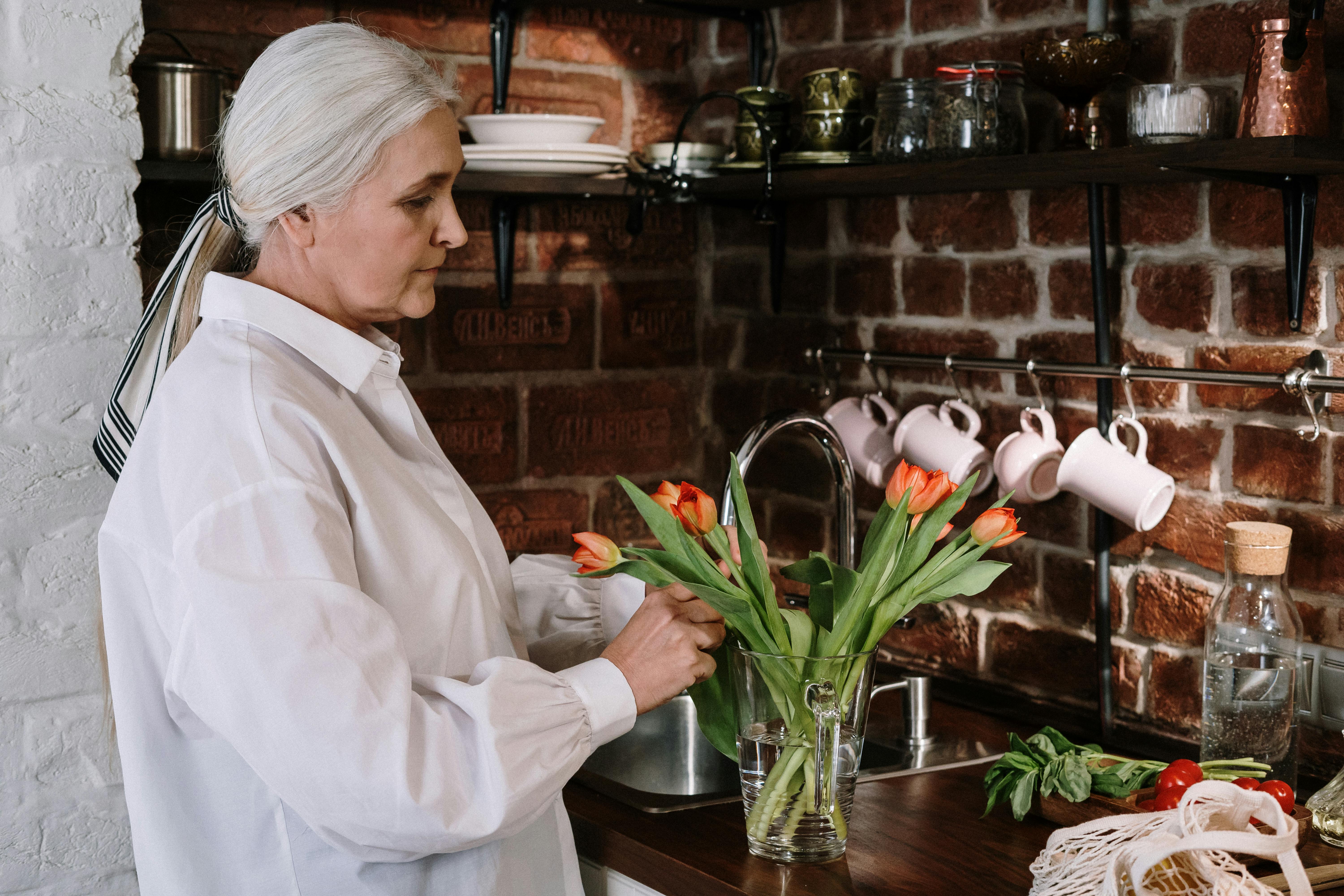From teacups to oil drums, there’s nothing you can’t use as an outdoor plant container. Your choice of plants, your decorative style, your budget, and your creative imagination will influence your choices for plant containers. However, there are several things to consider before you start adding plants to your outdoor pots.
Very small containers will dry quickly and offer limited growing space, so the cup of tea is probably not a good choice. Very slow-growing plants, such as sedums or cacti, will do well in a restricted environment. However, be aware of the water needs. Some succulents need a good amount of moisture.
Make sure any container you choose has good drainage. With the exception of pond plants, decorative plants don’t like their feet getting wet all the time. If you are concerned that the potting mix will drain along with the excess water, cover the holes with a single layer of newspaper or a coffee filter before adding the planting soil.
Clay or terracotta planters
Available in almost any size and shape, clay plant containers are traditional garden resources. Its appearance is especially attractive in warm, sunny garden designs from the south or the Mediterranean.
Unglazed clay pots are porous, which means that the water in the soil will evaporate from the sides of the container. They will need to be watered more frequently than less porous containers. Painted or glazed clay pots will retain more moisture on a hot day.
These pots are heavy for their size. If you are planting a large pot, it will be difficult to move it. If you anticipate having to move a large terra cotta pot, place it on a decorative dolly before filling it with your planting mix. This way you can move it even when the indoor floor is wet and heavy.
Covering these containers with plastic before planting can reduce water loss from the sides. The easiest thing to use is a plastic bag large enough to touch the sides of the pot all around. Remember to drill drainage holes at the bottom. When adding your planting mix, hide the sides of the bag by pushing them down into the mix before planting.
Because all clay pots are porous, they don’t do well outdoors during cold winters. The moisture in the pot will expand if it freezes, often cracking the pot. Cement containers and other stones also often crack in freezing temperatures for the same reason. Consider whether you will be able to take your pots to a warmer shelter during the winter. If this is not possible and you want to preserve your plantations, choose another type of container.
Wooden Plant Containers
Whiskey barrels and other wooden patio containers are popular. Because wood will eventually deteriorate when exposed to water and sunlight, lining wooden plant containers with heavy plastic will extend its life and reduce water stains outside.
Cedar, redwood, and teak are naturally resistant to water breakdown. Containers made from treated wood or lumber usually last slightly longer than untreated wood. However, some chemicals used to treat wood are not suitable for edible plants and can pose a health risk. Always check the materials used to treat any wooden planter for safety.
Metal pots, tubs and wagons
As long as there is drainage at the bottom, you can use any metal container to hold your garden plants. Keep in mind that any large metal container will be heavy, so place it where you want it to stay unless it has wheels.
Plastic and resin packaging
Plastic plant containers are the lightest and often most economical containers for the garden. Of course, this is why your plant nursery uses plain plastic pots.
You can find resin containers that mimic the look of concrete or glazed ceramic. These pots are useful if you don’t want to worry about freezing and cracking or being overweight. Most of them are also quite handsome.
Plastic and resin pots are non-porous, so they won’t lose moisture as quickly as unglazed ceramic. Because they don’t lose moisture, it’s especially important to make sure they have enough drainage at the bottom so that the plant roots don’t fill with water. Many resin containers have holes that the end user must open. Make sure to do this before you start planting.
Thin plastic pots will have a short shelf life as they will eventually crack in the sun. However, because they are inexpensive, it will be less expensive to replace them every few years.
Color makes the difference
Dark plant containers will soak up the summer heat. If the roots of your plants get too hot, they will be damaged or even killed. In hot climates, choose lighter colored containers to reduce heat build-up.
Avoid outdoor pot saucers
Many planting containers come with saucers to contain the flow of water. Avoid saucers under outdoor plants, as these are excellent places for mosquitoes to lay their eggs. Your plants can soak up a little extra water between waterings, although this is not always the case. However, your garden and yard will be invaded by mosquitoes.
Whichever container you choose to pot, the top three things to remember are: 1) Choose the correct size for your plants. Too small a container will not have growing space, and too large a container will overwhelm and dwarf your plants; 2) make sure your container drains well; 3) Check soil moisture regularly and maintain the type of moisture your plants need. Don’t plant a cactus and a rose in the same container, their water needs are very different.
